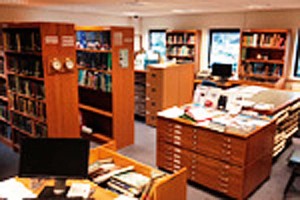The Cruising Association’s Limehouse HQ is the place to go to plan your cruising, says Sue Pelling
Where can you go in the centre of London when you want in-depth sailing information, or to share experiences with likeminded cruising folk? The Cruising Association has a huge navigation data resource and a splendid waterside headquarters in London’s Limehouse Basin, just ten minutes’ walk or two train stops away from the City. It has become the first port of call for the serious yachtsman based in London. And its online facility is invaluable.
Dispelling the myth that cruising clubs only attract the older generation, the Cruising Association has nearly 5,000 members, many in their late 30s or early 40s, who are smart enough to have recognised all the advantages the association has to offer.
The Cruising Association was founded in 1908 by a group of cruising enthusiasts that included John Love, the first chairman, and Herbert James Hanson, treasurer and editor of the first Cruising Association handbook in 1920. Hanson, who was one of the key members responsible for the success of the association in the early days, had a passion to establish and build the library, which is now one of the greatest assets of the association.
At the time, however, the Cruising Association was run from the offices of the Hon Secretary E. S. M. Perowne, and later from Denison House, Victoria, and there was nowhere to display the books. The headquarters moved to 16 Albermarle Street where Hanson’s fine collection was finally displayed and he was able to produce the library’s first catalogue. It included some of the early classic works in the history of navigation, such as the treatises by Cortés and Medina – text books for the early Spanish explorers.
In 1930 as membership grew, the association moved again to Chiltern Court, a specially designed, elegant building above Baker Street station. Here it remained until 1972 before moving to Ivory House in St Katharine Dock, the Cruising Association’s final move before establishing its own premises at Limehouse in 1994.
The Hanson Collection, which included books on the history of shipbuilding and design, navigation and atlases – the earliest dating from the 16th Century – was sold in 1990 to English Heritage for Cambridge University Library. The sale not only relieved the association of the cost of the insurance premium and the responsibility of such a valuable collection, but it also helped to fund the building of its new headquarters in Limehouse Basin.
Limehouse HQ
The Limehouse headquarters, which this year celebrates its 20th anniversary, is now well-established on the waterfront. Members can even arrive by boat, but because the marina is run independently, the advice is to check availability and book well in advance.
As a limited, non-profit-making company managed by a council and committees, the Cruising Association is run entirely for its members. A small number of staff administers the day-to-day business and the clubhouse is open seven days a week for members’ use. There is a bar where members can meet up and chat with those who share a common interest, but for those keen on research and passage planning, the facilities on offer, such as the library and information centre, are invaluable. Information is also available online, which is a real asset, particularly for the 35 per cent of members living abroad.
The Cruising Association’s library has been built up over the years by members and is the largest of its kind, with over 10,000 volumes. The library covers every aspect of cruising, from meteorology to maintenance, navigation to nautical history, and spans the world, from the UK’s inland waterways to ocean passagemaking and circumnavigations.
There is an extensive range of pilot books and cruising guides, global tidal atlases and current editions of every pilot or guide, including the Cruising Association’s own almanac. The Cruising Association also has one of the most comprehensive collections of volumes of yachting magazines, including Yachting World, Yachting Monthly (first issue 1906), and Practical Boat Owner.
The chart collection, which boats more than 3,000 charts from around the world, is an integral part of the cruise-planning feature of the library and information centre. The collection includes a selection of obsolete and rare charts, plus a set of up-to-date electronic charts, which can be accessed on the centre’s computers.
Members also have the opportunity to attend lectures, seminars and RYA training courses, which run throughout the year, as well as get involved in online discussion forums to share cruise information and practical tips and advice. Those who live outside London and who need a bed for the night can benefit from the good value cabin accommodation, offered on a B&B basis.
This is an extract from a feature in Yachting World August 2014 issue





